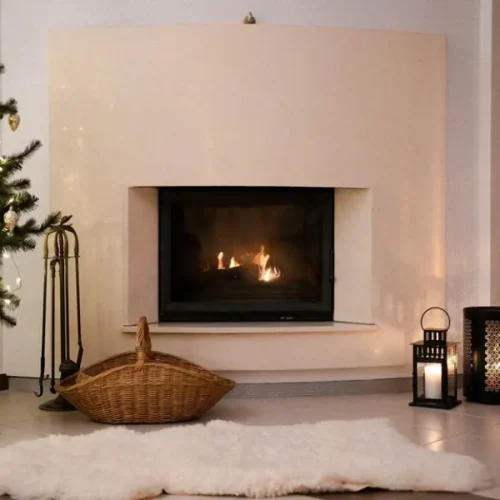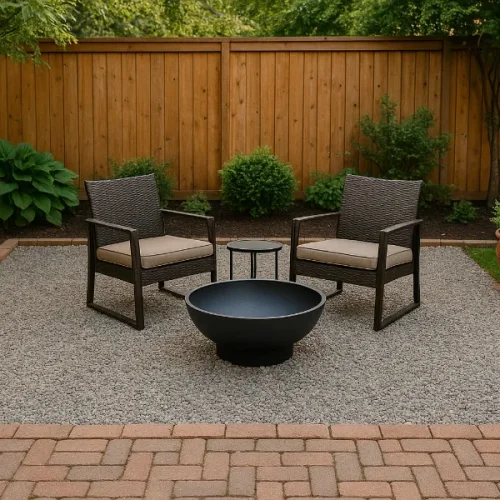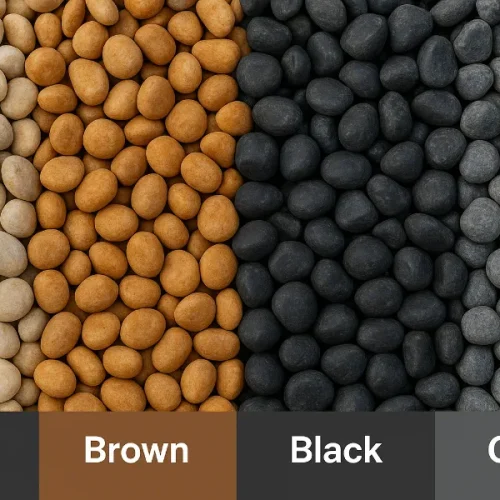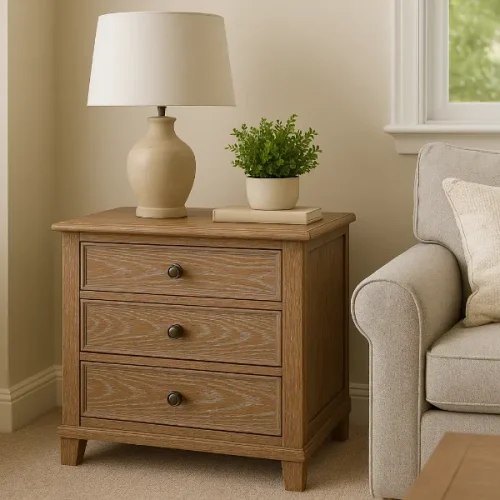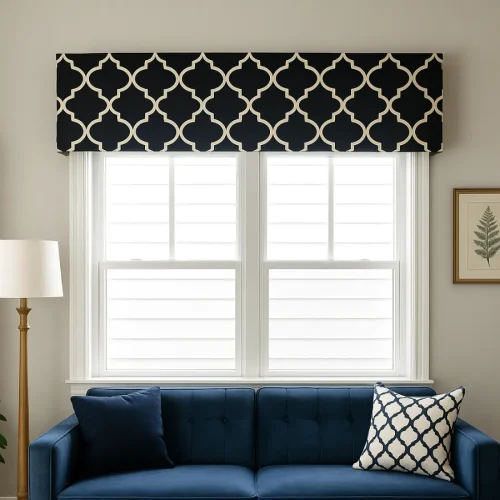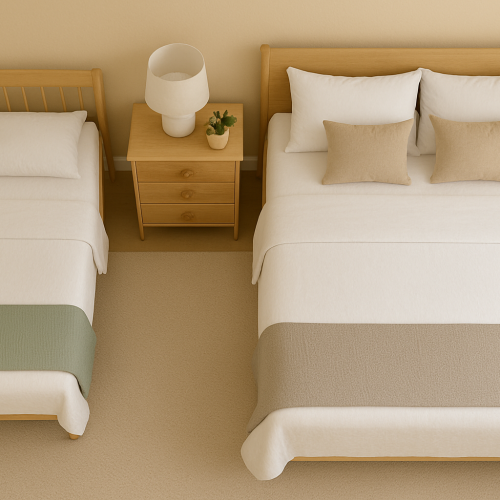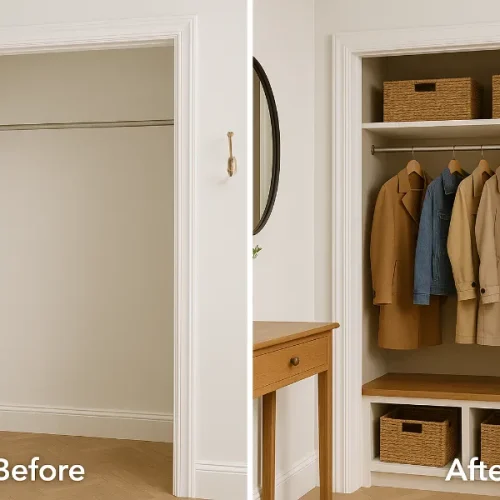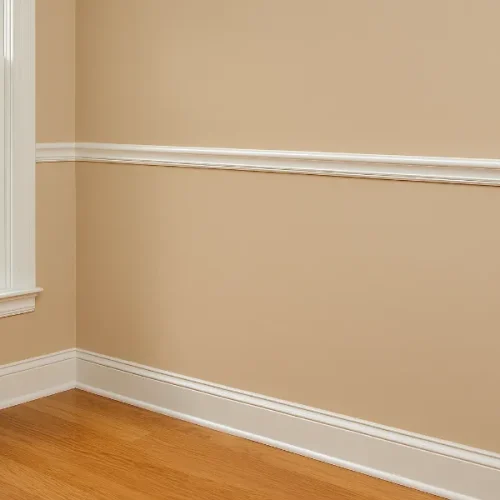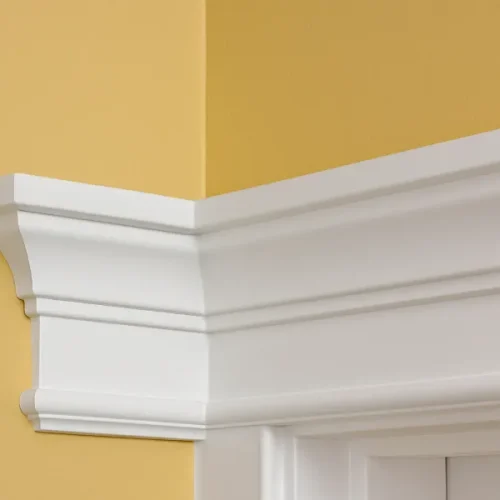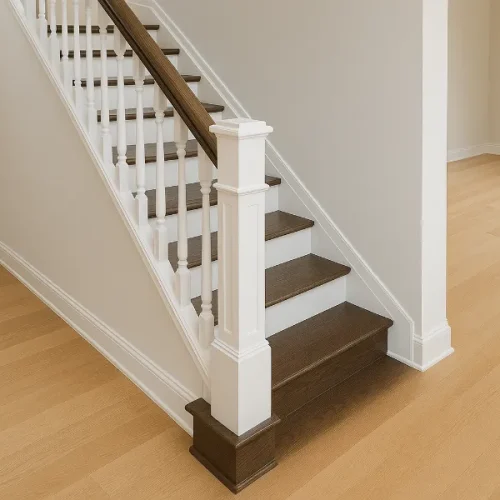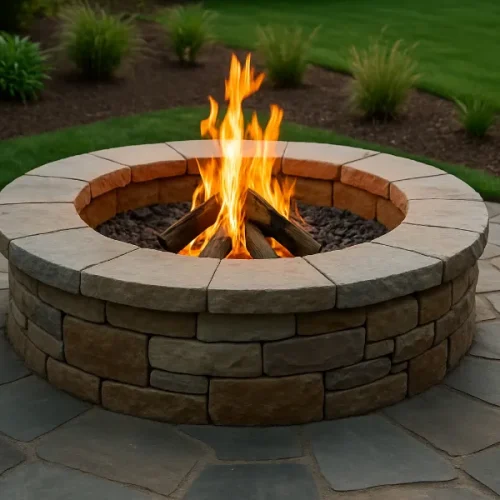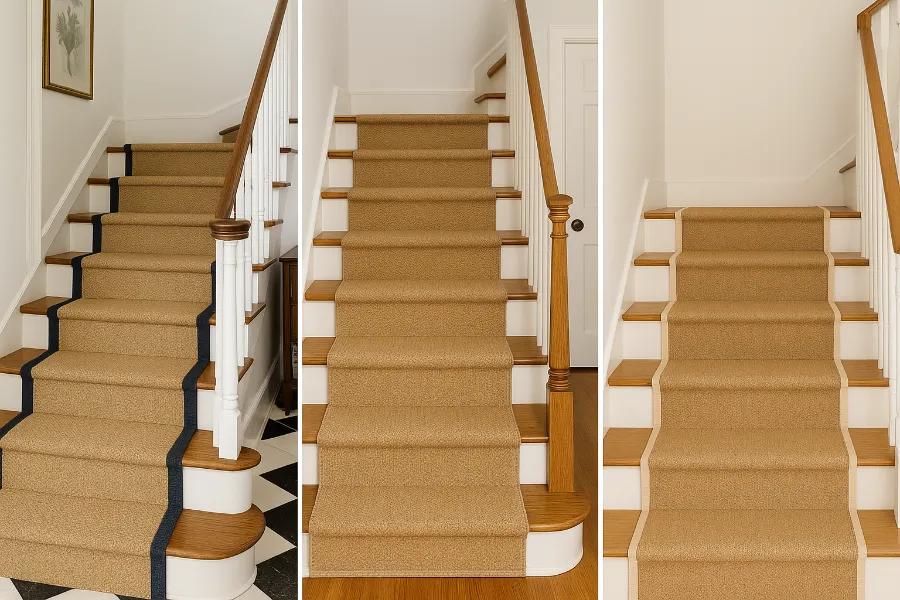
When it comes to stair decor, few choices strike the perfect balance between function and natural beauty quite like a jute stair runner. Stairs are often a focal point in a home, whether they sit grandly in the entryway or connect quieter areas upstairs. And while they need to stand up to daily traffic, they also set the tone for the overall look of your space. That’s where jute stair runners shine. They add grip, protect your wood treads, and bring earthy warmth in a way no synthetic material can.
If you’re searching for a runner that is timeless, eco-friendly, and versatile, jute deserves your attention. Let’s dive deep into what makes this natural fiber such a popular option, how to style it, and what to know before installing one in your home.
What is a Jute Stair Runner?
Jute is a natural plant fiber harvested primarily in India and Bangladesh. It has been used for centuries to make ropes, mats, and rugs. In home decor, it’s celebrated for its organic texture and earthy tones. A jute stair runner is simply a strip of woven jute carpet installed down the center of a staircase, leaving exposed wood on either side for a tailored look.
The appeal is obvious: jute instantly warms up a space, adds tactile interest underfoot, and complements almost any design style, from farmhouse rustic to modern minimalism.
Why Choose a Jute Stair Runner?
1. Natural and Sustainable
Unlike synthetic carpets, jute is renewable and biodegradable. If sustainability matters to you, jute is one of the most eco-friendly flooring materials available. It’s harvested quickly and requires fewer chemicals in processing than man-made fibers.
2. Organic Warmth
Jute has an oatmeal-like tone that pairs beautifully with both light and dark staircases. It softens sleek, modern spaces and grounds more traditional ones. In a foyer with cool tile or marble, jute introduces a touch of warmth that makes the space feel welcoming.
3. Affordable Style
Compared to wool or custom-made runners, jute is often a budget-friendly option. Many homeowners find they can DIY a jute stair runner using off-the-shelf rugs or runners, saving on both material and installation costs.
4. Subtle but Impactful
While bold patterns and colors can make stairs a statement, jute creates a quiet elegance. Its texture does the talking, and its neutral color makes it versatile enough to work with changing decor.
Design & Styling Ideas for Jute Stair Runners
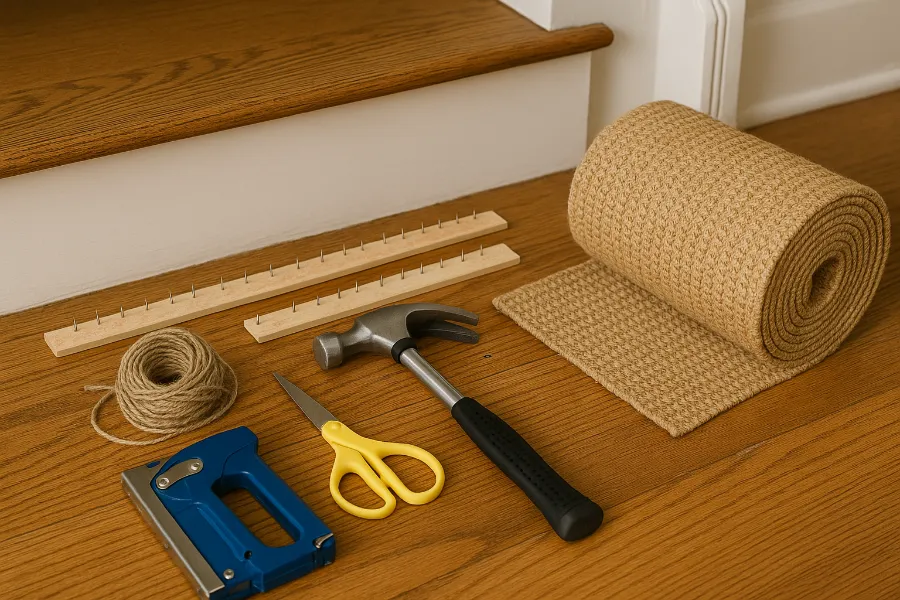
One of the best parts of working with jute is how flexible it is in terms of design. Here are some stylish ways to incorporate it:
Pairing with Borders
A plain jute runner is timeless, but adding a contrasting border takes it up a notch. For example:
- A navy border brings a coastal vibe.
- A black border adds crisp definition in modern spaces.
- A white or cream border keeps things airy and fresh.
This simple addition allows you to tie the runner into other design elements in your hallway or entryway.
Mixing with Materials
Because it’s a natural fiber, jute looks best alongside other organic elements. Pair it with:
- Wood stair treads for a warm, layered look.
- Wrought iron railings for contrast.
- Black-and-white tiled entryways for balance between sleek and rustic.
Using Stair Rods
For a more traditional or decorative touch, add stair rods across each tread. They aren’t always necessary for installation, but they add historic charm and highlight the runner.
Neutral but Not Boring
Jute doesn’t have to mean bland. Its woven texture creates plenty of depth, and you can select between tighter weaves for a polished finish or looser, chunkier weaves for a casual vibe.
Durability and Practical Considerations
This is where you need to weigh the pros and cons. Jute is beautiful and natural, but it has limitations.
The Pros:
- Durable enough for moderate traffic: Jute holds up well under daily use if installed properly.
- Low maintenance: Regular vacuuming is usually enough to keep it looking good.
- Comfortable underfoot: Softer than sisal and not as rough as seagrass.
The Cons:
- Not very stain-resistant: Jute absorbs moisture quickly, so spills can be tricky. It’s best to avoid using it in damp areas or homes where muddy shoes are common on the stairs.
- Color variation: As a natural material, jute can fade in direct sunlight or develop uneven tones over time. Many homeowners embrace this as part of its charm.
- Less forgiving than wool: Wool fibers naturally repel dirt and stains, but jute does not.
Best tip: If your stairs are in a main entryway with heavy traffic, you might want to pair jute with a darker border that disguises dirt, or reserve it for a secondary staircase where it won’t take as much wear.
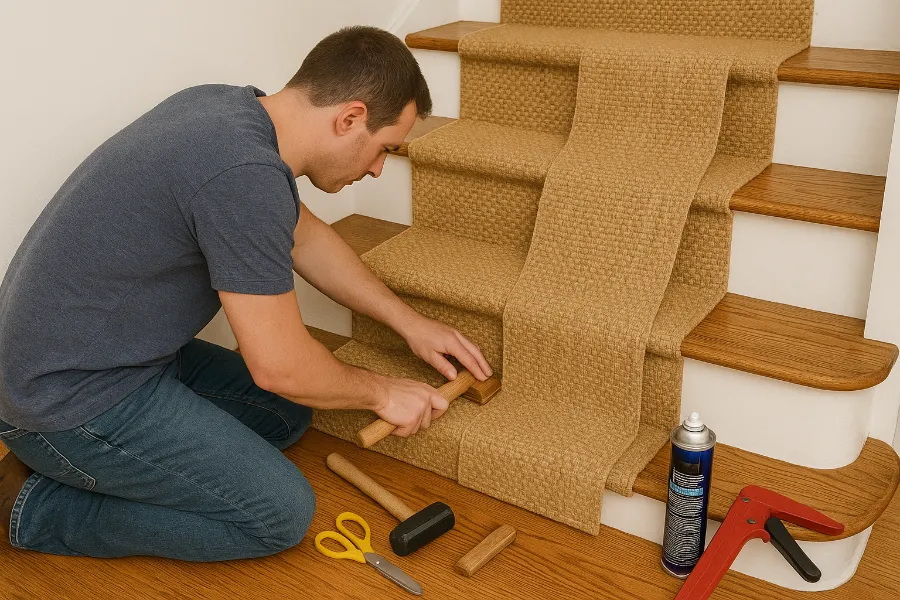
DIY vs Professional Installation
The popularity of DIY stair runners has skyrocketed in recent years, partly because jute runners are available in affordable rolls and rugs.
DIY Installation
- Many homeowners use multiple jute rugs or runners, cutting and seaming them step by step.
- Carpet tape and tack strips are common tools, with stair rods added for polish.
- It’s budget-friendly and satisfying if you’re handy.
Professional Installation
- A pro can stretch and fit the runner perfectly, especially on curved stairs or staircases with landings.
- They’ll also ensure seams are nearly invisible, which can be tough in DIY projects.
- It costs more, but the finish is cleaner and longer-lasting.
If you’re confident with tools and measuring, DIY is absolutely doable. If your stairs are complicated in design, professional installation is worth the investment.
How to Care for a Jute Stair Runner
Because jute is a natural fiber, it needs gentle care. Here are some best practices:
- Vacuum regularly – Use a brushless vacuum head to avoid pulling fibers.
- Blot spills immediately – Don’t rub, as it can push moisture deeper.
- Avoid excess water – Jute shrinks and warps when wet, so use a dry cleaning powder or a specialized jute cleaner for spot treatments.
- Rotate rugs if DIY-ed – If you’ve created a stair runner from multiple smaller rugs, rotate them occasionally to even out wear.
- Add an underlay – This not only extends the life of the runner but also adds comfort and reduces noise.
Inspiring Examples of Jute Stair Runners
From the document you provided, here are a few standout examples that can inspire your own project:
- Oatmeal Jute in a Cool Foyer
An oatmeal-toned jute runner warmed up a stark entryway, connecting black-and-white tile flooring with wooden stair treads. - Jute with Navy Border
A grand foyer used a casual jute runner, but a deep navy border elevated it, pulling in blue accents from the wallpaper and accessories. - Edge-to-Edge Jute
Some designs run the jute from wall to wall, creating a stair carpet effect that feels both rustic and cozy. - DIY Projects with Jute Rugs
Many budget-friendly DIYers stitched or taped together affordable jute rugs to create custom runners, proving you don’t need a big budget for high impact.
Is a Jute Stair Runner Right for You?
To decide, ask yourself these questions:
- Do you love natural textures and neutral tones?
- Is your staircase not the main workhorse of your home (i.e., not constantly hit with mud and spills)?
- Do you want a budget-friendly but stylish solution?
- Are you okay with occasional imperfections and patina that come with natural materials?
If you answered yes, a jute stair runner could be a fantastic choice. It’s warm, tactile, eco-friendly, and endlessly versatile.
Final Thoughts
Stairs are more than just a way to move between floors—they’re a design feature that connects your entire home. A jute stair runner transforms them with natural elegance while also improving safety and comfort.
Whether you go the DIY route with affordable rugs or hire a pro for a polished installation, the result is the same: a staircase that feels grounded, welcoming, and stylish.
In a world of synthetic materials, jute is a reminder that natural, simple choices often bring the most beauty to our homes.


